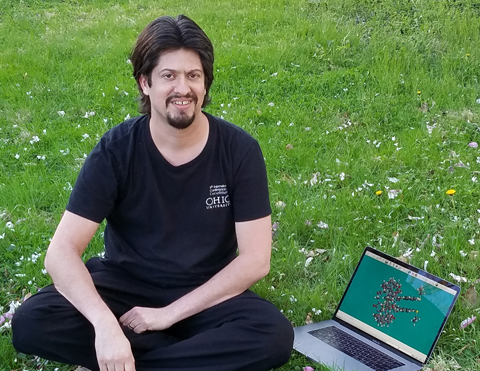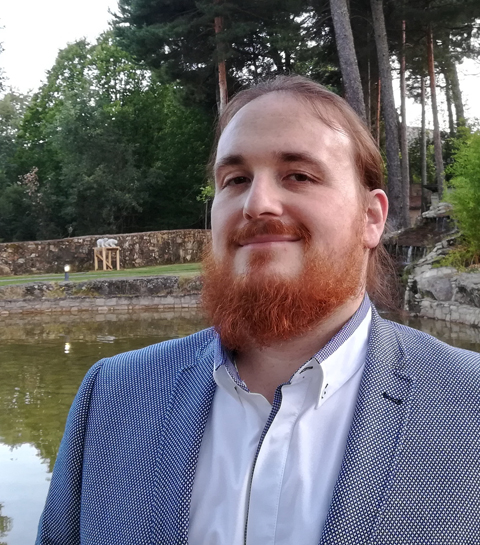Three Ohio University chemists have found that molecules synthesized in their group might inhibit a key enzyme in SARS-CoV-2 coronavirus replication. Their work could potentially lead to the development of new antiviral drugs against SARS-CoV-2.
Dr. Eric Masson, post-doctoral associate Dr. Hector Barbero, and graduate student Nathan Thompson recently showed that Cucurbit[8]uril, a hollow pumpkin-shaped macrocycle, can secure a pair of Platinum-based molecules on top of each other—and can lead them to bind to any pair of sulfur-containing molecules. This study was recently published in the Journal of the American Chemical Society.
In the meanwhile, Masson and Barbero showed that this pair of Platinum units also binds sulfur-containing cysteine residues on peptides to form large, yet well-defined peptide/metal/Cucurbituril assemblies.
Before the COVID-19 pandemic hit the world, Masson and Barbero had realized that their Cucurbituril-secured Platinum dimers would likely bind to proteins displaying a pair of cysteine residues close to each other, or to one cysteine residue and one neighboring amino acid prone to interactions with Platinum. But this hypothesis took a whole new turn when a few days ago, Masson discovered from an article in Chemical and Engineering News that the active site of a key enzyme needed for the replication of the SARS-CoV-2 coronavirus is a close pair of cysteine and histidine residues! As both amino acids can attach to Platinum, the active site of the dreadful enzyme, a cysteine protease, could be selectively targeted by the Platinum dimers designed by Masson and his co-worker.
![Cucurbit[8]uril, a hollow pumpkin-shaped macrocycle, that secured a pair of Platinum-based molecules on top of each other. This can lead them to bind to any pair of sulfur-containing molecules.](https://www.ohio-forum.com/wp-content/uploads/2020/04/Cucurbit8uril-macrocycle-with-platinum-based-molecules-480.jpg)
Cucurbit[8]uril, a hollow pumpkin-shaped macrocycle, that secured a pair of Platinum-based molecules on top of each other. This can lead them to bind to any pair of sulfur-containing molecules.
As this work could potentially lead to the development of new antiviral drugs against SARS-CoV-2, Masson and Barbero are eagerly diving into this new challenge.




















Comments